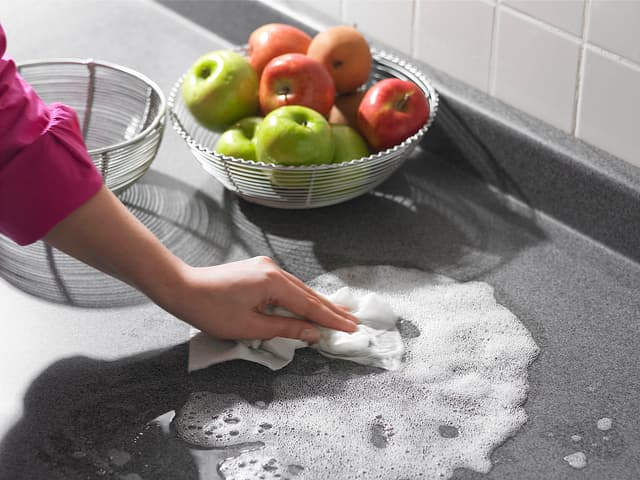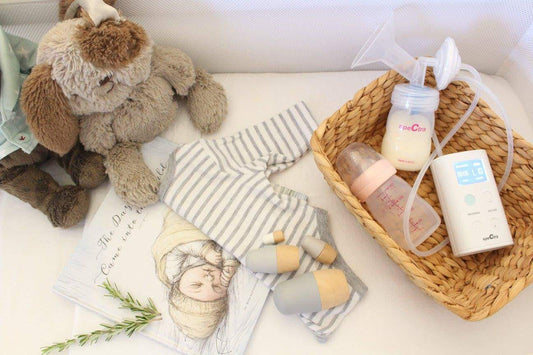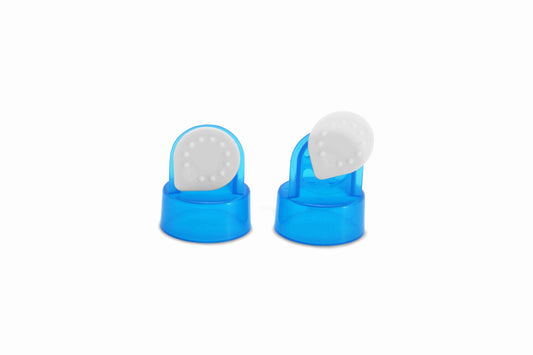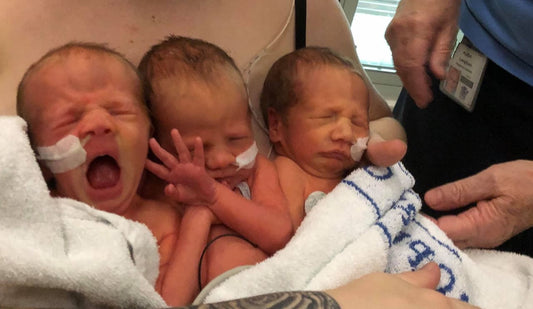Prepare your breast pump for first time use
Before you use your breast pump for the first time, you'll need to prepare by sterilising all parts that come in contact with your baby's milk. This includes the breastshield, backflow protector, valve, bottle, bottle neck, sealing disc, bottle cap, and teat. Make sure you fully disassemble the backflow protectors, valve + membrane sets, and remove the valve from the breastshield prior to sterilisation. Do not sterilise the tubing or pump motor. Getting the tubing wet can cause irreparable damage to the motor and allow moisture into the motor, creating a cozy environment for mould, mildew and bacteria to grow.

Using boiling water to sterilise your breast pump parts
There are a few different methods you can use to sterilise your breast pump parts. We recommend the boiling water method.- Select a pot large enough to fit all the parts without them rubbing together, such as a stock pot.
- Fill it with plenty of water to fully saturate the parts and leave plenty of room for a rolling boil. Make sure parts have plenty of room to move around and aren’t nestled together as this can cause irreparable warping.
- Place on a stovetop and bring to a rolling boil.
- Boil for 5 minutes, then remove from heat.
- Allow to cool to a manageable temperature, then use a a pair of tongs to carefully remove parts.
- Set them on a clean paper towel away from a high traffic area (don’t use a cloth towel as cloth can harbour bacteria).
- Allow to completely air dry prior to assembly.

How to wash your breast pump parts
We recommend hand-washing your parts whenever possible. Frequently microwaving or running parts through the dishwasher will cause them to deteriorate faster, just as frequent sterilisation does. When cleaning, make sure parts are fully disassembled (e.g. membranes removed from valves, valves removed from breastshields, and backflow protectors taken apart).Hand washing
To hand-wash parts in the sink, you'll need a separate wash basin, a dedicated sponge or bottle brush, clean paper towels, standard dish soap, and access to warm, potable water.- Fill up a wash basin with warm, soapy water.
- Add your pump parts and 'swoosh' them around.
- Wash each part part thoroughly; be careful with the membranes and valves - they are extremely delicate and prone to tearing or stretching.
- Rinse thoroughly.
- Set to air dry on a clean paper towel away from high traffic areas.
- Allow to completely dry prior to assembling.

Dishwasher, microwave, and cleaning solutions
Spectra breastshields, bottles, and other hard plastic accessories are BPA-free and can go through the dishwasher without worry of harmful residue - however, it will cause them to wear down and discolour more quickly. You should hand wash whenever possible. Do not wash silicone parts like valves, membranes, teats, and backflow protector membranes in the dishwasher. These parts are delicate and should be hand washed without brushes whenever possible. For microwave steam cleaners or cleaning solutions, follow the manufacturer's instructions.Pumping multiple times per day
How to clean backflow protectors
Wash as you would your valves with great care, ensuring the parts are disassembled. You want to make sure they are completely clean and dry prior to every pumping session to avoid milk and mould in the tubing and pump.
It's important to replace the backflow protectors regularly to maintain proper performance of your breast pump. The silicone parts can wear down over time, causing the pump motor to work harder, a decrease in suction which can hurt your milk supply, or a loss in airtight seal allowing moisture into the tubing. Read our guide on replacing pump parts for how often you should replace your backflow protectors and other parts...




